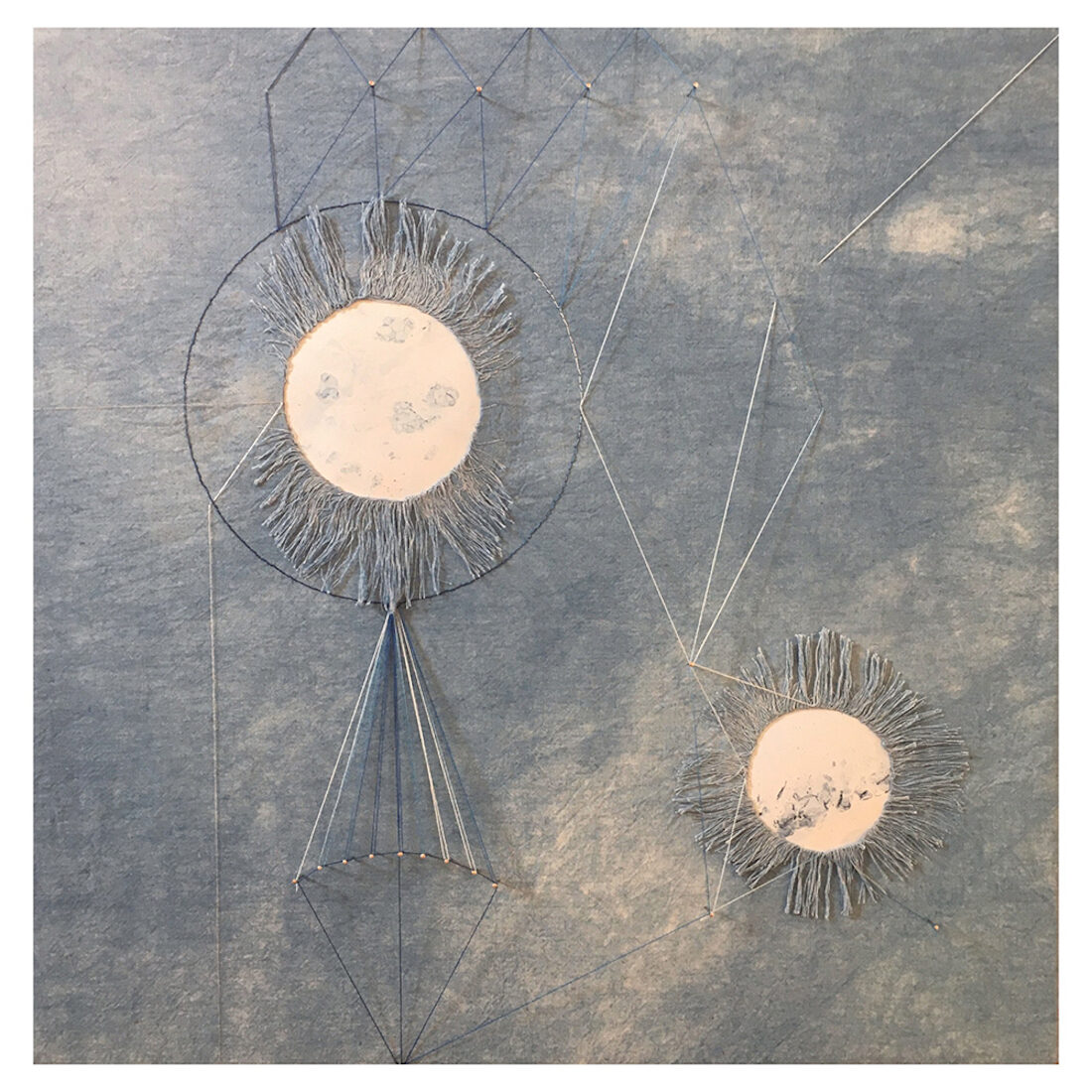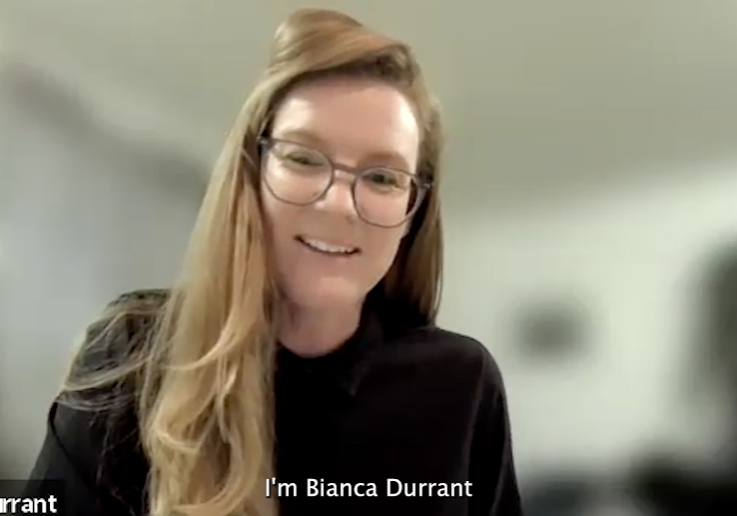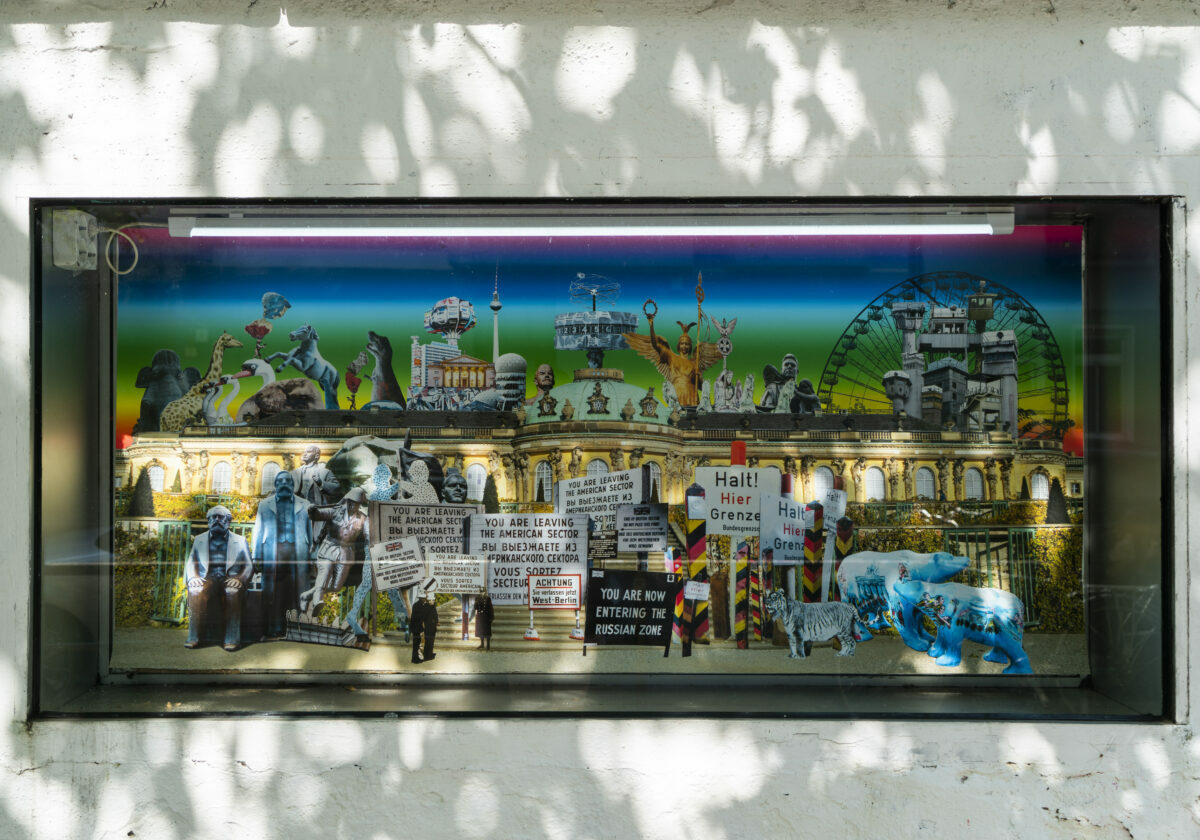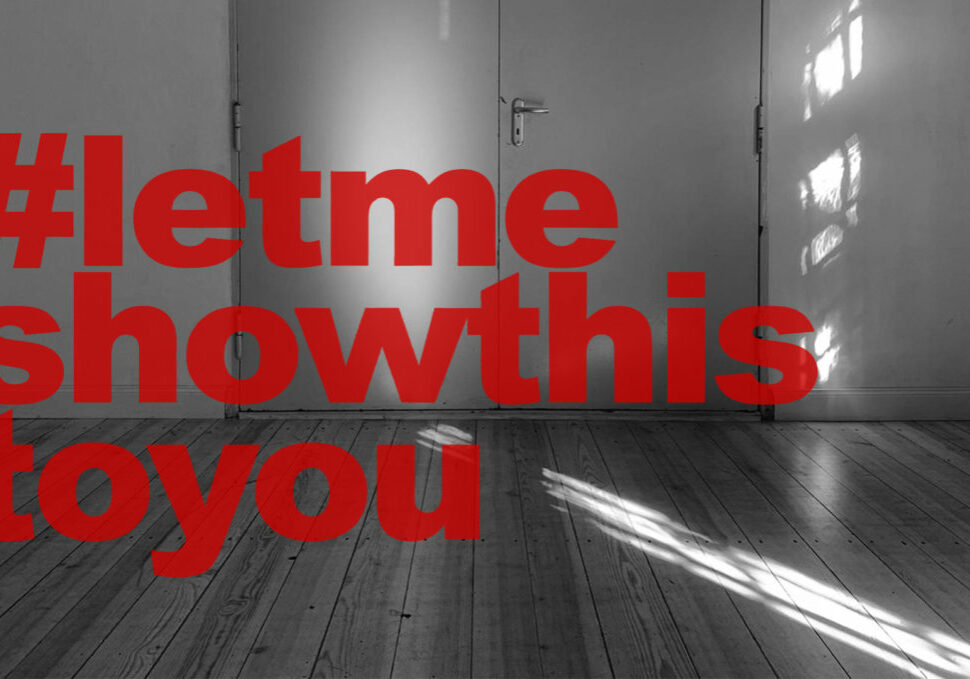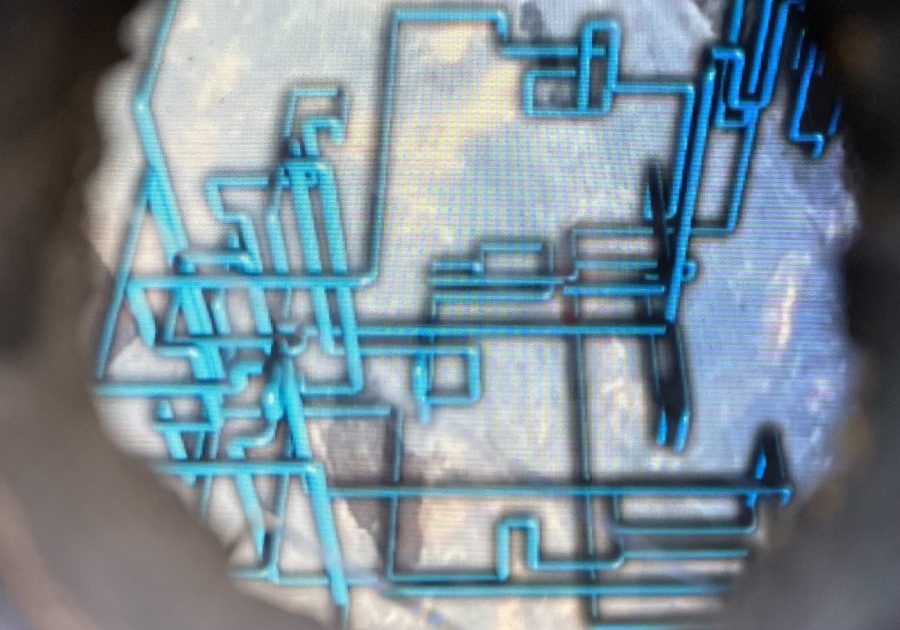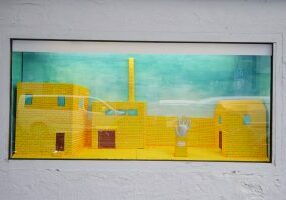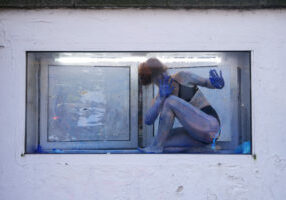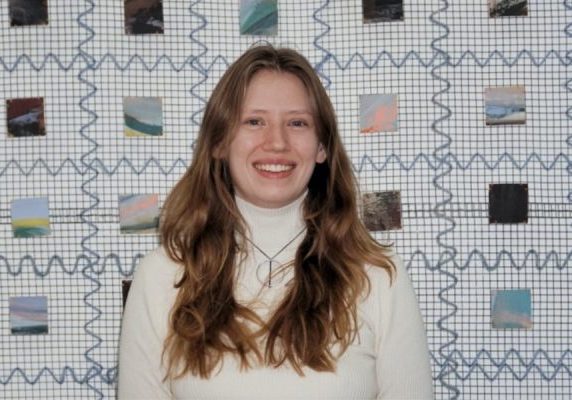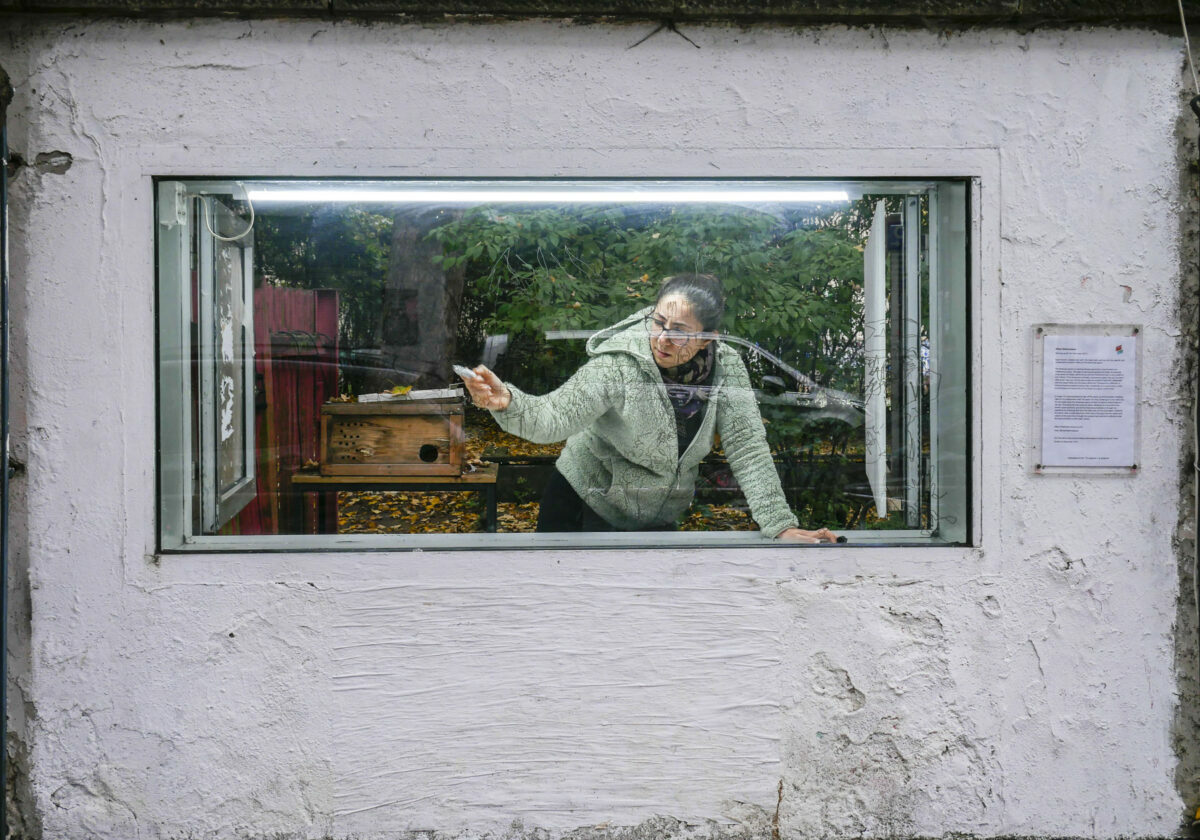Meet the artist // Maria Paz Bascuñán
Mari Paz Bascuñán is an artist from Chile, who has been a resident artists at GlogauAIR from July to September 2022. This interview is the result of a conversation between Savanna Fortgang and the artist that took place during September 2022 in the residency.
Savanna: What do you do as an artist?
Mari Paz: As an artist I work with natural fabrics and natural dyes like cochineal, turmeric, indigo and now I am investigating Cyanotype.
S: What is your process?
MP: First, I go through a creative process of reading and research depending for example on where I am going to exhibit, or in what context or project I am working to generate works according to what I want to communicate.
Then I start collecting images and fabrics that I would like to work with and intervene them through the act of doing and undoing.
S: Why do you create the art that you do – what are overarching themes in your artwork?
MP: I started working on fabrics, specifically weaving and unweaving them one day when I was dismantling an artwork. It caught my attention to see the threads that were appearing when I was unweaving and I started to make games of lights and shadows depending on how many threads I took out and how many I left. On the other hand, the very act of doing and undoing led me to a meditative state and to connect from a place that I wanted to continue exploring. Through the fabrics I started investigating the idea that all identity is fragmentary and is made of pieces that are woven together to form a whole that never remains fixed. To unravel what has been done is to establish the attempt to return to an original and complete state of things, the denial of time and its destruction. Under this idea I re-signifies the concept of territory and limits, represented by unwoven forms in tension, as an instance of encounter, a threshold that does not limit the possibilities, but rather enhances and amplifies them. It becomes an ambiguous terrain where different threads coincide and intermingle. Like the fabrics where the different threads that come off, overlap and cross from one end to the other to form a fabric that reveals the hidden framework behind the illusion of uniformity, reflecting in turn, with this act of doing and undoing on the internal and external process that affect our emotions, decisions and movements. I configure a threshold where the traditional temporal and spatial conceptions of observation dissolve, it is possible to observe a simultaneous construction from different corners and with different orientations, shaping a dialogical vision, where different voices converge and syncretically shape the discourse.
S: How has your work evolved since being here at GlogauAIR? How has GlogauAIR changed your practice?
MP: It was very nice when I started working for the GlogauAIR project because I followed my own line of creative process and when I read and researched about the place where I was going to be, I realized that Chile and Germany, despite being far apart, have many things in common that I could enhance in my work here (not only with the migration that brought to Chile influences in architecture, food, culture, etc., but for example when the wall fell, democracy returned to Chile). This residency has enriched my line of research in the selection of work elements looking for their form of expression, communication and creation through these new possibilities of execution. This experience has allowed me to understand some dynamics and to approach from some perspective problems and qualities that connect both realities. It has been a laboratory of experimentation to enrich my critical and analytical visual thinking in relation to my work. Among the works, there are some whose main image is the representative eagle on the German coat of arms and others the Condor on the Chilean coat of arms, taking as a reference the legend “The eagle and the condor: A prophecy for our times”. Most of the world’s indigenous peoples have prophecies that help them explain the past in the context of the future, in order to make sense of the present. Many cultures present similar prophecies: a good example of this is the Prophecy of the Eagle and the Condor. This is not just a legend, but rather a look into our past, ourselves and our future.
S: What’s next for you? Where do you see yourself going as an artist?
MP: After the residency I return to my country to resume the work I left frozen to live this experience to the fullest. The first thing will be to digest everything I have lived, I have seen and learned and then to order the information and thus take as a reference what has served me and connects with my work to generate future works. I am in conversations with a Chilean-German Museum in the south of Chile that could be interested in exhibiting my work and that conceptually unites with what I have done here. As an artist I see myself generating ties and bridges of connection with places that enhance my creative activity. I see myself working in textile and taking it to its maximum potential through different techniques that I discover and intertwine to generate a coherent and honest discourse.

